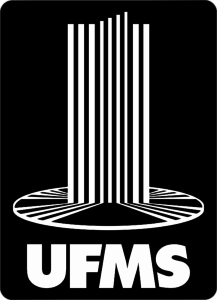Use este identificador para citar ou linkar para este item:
https://repositorio.ufms.br/handle/123456789/13083| Tipo: | Trabalho de Conclusão de Curso |
| Título: | QUEM TEM MEDO DAS LÉSBICAS? Um olhar sobre a imprensa lésbica brasileira para o redesenho do Boletim ChanaComChana |
| Autor(es): | RAFAELLA MOURA TEIXEIRA |
| Primeiro orientador: | RAFAELLA LOPES PEREIRA PERES |
| Resumo: | Este trabalho tem como objetivo principal destacar as discussões importantes para possibilitar a construção de conhecimento a respeito da trajetória/existência lésbica e ampliar a identificação/aceitação social. Para isso realiza um levantamento bibliográfico sobre o conceito de lesbianidade, os movimentos lésbicos no Brasil e o impacto do jornalismo no continuum lésbico e na luta por direitos; assim como identifica e apresenta o percurso da mulher lésbica em busca de visibilidade na história, para realizar a (re)elaboração do Boletim ChanaComChana, um dos principais veículos de comunicação, com circulação entre 1981 a 1987, voltado às discussões promovidas por e para as mulheres lésbicas. A proposta de redesenho fundamenta-se tanto na importância histórica do veículo para a consolidação da imprensa lésbica no Brasil, quanto na constatação de que a sociedade ainda mantém as mulheres lésbicas em um estado persistente de apagamento. Além da análise e criação de uma nova proposta de apresentação do boletim em questão, o resultado deste trabalho consiste na elaboração (conteúdo e diagramação) de três boletins impressos, cujos conteúdos foram produzidos por e para mulheres lésbicas, fundamentados nas demandas e debates que refletem as múltiplas formas de lesbianidade contemporânea. O primeiro boletim é temático, voltado para o resgate da memória das lésbicas; o segundo apresenta perspectivas lésbicas que transcendem o eixo Rio-São Paulo; e o terceiro, faz um recorte regional, dedicando-se às histórias de mulheres lésbicas sul-mato-grossenses, e buscando conectar memórias do passado às vivências do presente. |
| Abstract: | The main objective of this work is to highlight important discussions that enable the construction of knowledge about lesbian history/existence and increase social identification/acceptance. To this end, it conducts a bibliographic survey on the concept of lesbianism, lesbian movements in Brazil, and the impact of journalism on the lesbian continuum and the struggle for rights. as well as identifying and presenting the journey of lesbian women in search of visibility throughout history, in order to (re)elaborate the Boletim ChanaComChana, one of the main communication vehicles, in circulation between 1981 and 1987, focused on discussions promoted by and for lesbian women. The redesign proposal is based both on the historical importance of the medium for the consolidation of the lesbian press in Brazil and on the observation that society still keeps lesbian women in a persistent state of erasure. In addition to analyzing and creating a new proposal for the presentation of the newsletter in question, the result of this work consists of the preparation (content and layout) of three printed newsletters, whose contents were produced by and for lesbian women, based on the demands and debates that reflect the multiple forms of contemporary lesbianism. The first bulletin is thematic, focused on recovering the memory of lesbians; the second presents lesbian perspectives that transcend the Rio-São Paulo axis; and the third takes a regional approach, dedicating itself to the stories of lesbian women from Mato Grosso do Sul, seeking to connect memories of the past with experiences of the present. |
| Palavras-chave: | lesbianidade design gráfico-editorial memória lésbica jornalismo impresso |
| País: | |
| Editor: | Fundação Universidade Federal de Mato Grosso do Sul |
| Sigla da Instituição: | UFMS |
| Tipo de acesso: | Acesso Aberto |
| URI: | https://repositorio.ufms.br/handle/123456789/13083 |
| Data do documento: | 2025 |
| Aparece nas coleções: | Jornalismo - Bacharelado (FAALC) |
Arquivos associados a este item:
| Arquivo | Tamanho | Formato | |
|---|---|---|---|
| 32742.pdf | 11,36 MB | Adobe PDF | Visualizar/Abrir |
Os itens no repositório estão protegidos por copyright, com todos os direitos reservados, salvo quando é indicado o contrário.

